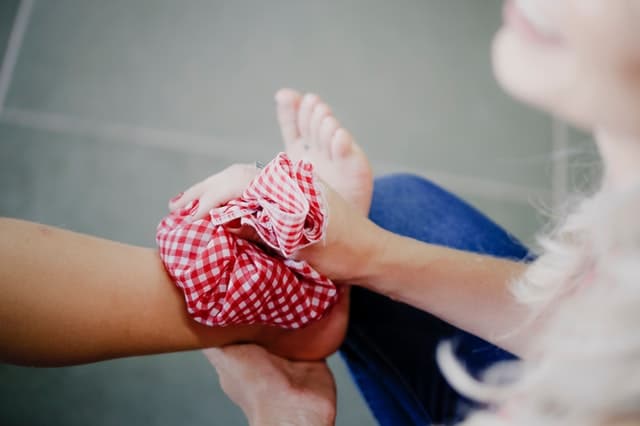Think Differently
Let me start by saying the following:
-
If you’ve been doing exercises for your back pain, and you are not getting better, then those exercises aren’t helping. Time for a change!
-
If you have been putting up with your back pain for longer than 2-months, then you are probably compensating with other joints and muscles.
-
If you have put up with your back pain for more than 6-months or you “work through the pain,” then you have trained yourself to ignore important feedback that your body is giving you.
-
If you think you’ve tried everything and surgery is your only option, then you have missed some information that your body has given you along the way.
-
If you think that there is nothing that can be done for your back pain because you “have had it forever,” then you are selling yourself short.
Your body has amazing restorative powers. It can heal almost every damaged tissue if directed along the correct path of treatment.
In fact, tissue healing is a largely predictable process. Under the right conditions most soft tissues (muscles, ligament, tendons) heal within 6-8 weeks after injury. So why doesn’t the back heal like that?
IT SHOULD!
The sad truth is we probably do not allow our back to stay “under the right conditions” when they are injured.

The Ankle Sprain Analogy
Let’s say you were out for a nice walk with your dog. You are looking at your neighbor’s beautiful garden when you misstep and turn your ankle. You are immediately unable to walk on the foot and swelling is present by the time you (and your dog) limp home.
NOTE: I am not speaking about fractures or dislocation of the ankle, just a severe sprain.
You know what to do even without seeing a doctor or getting an X-ray. Use the old P.R.I.C.E. So you Protect, Rest, Ice with Compression, and Elevate the ankle.
The next day, bruising appears on the outside of the ankle, the swelling is still very present, and you still cannot bear weight on you foot. So you grab a pair of crutches from a friend and put no weight on the ankle for several days. You continue with P.R.I.C.E.
As several days pass, you see the fruits of taking care of the acute injury so aggressively. The swelling is diminished and there is no longer bruising at your ankle, but gravity has pulled that bruise into your toes. The good news…you can now move your ankle without having blinding pain.
What do you do?
Of course! You start putting weight on the foot!
This can only go one of two ways:
1 – The ankle hurts like mad and gets worse as you move
or
2 – The ankle hurts like mad, but gets better as you move.
If the pain worsens, common sense tells you to use the crutches for a few more days. Your ankle is not ready for the stress of walking.
If the pain gets better, common sense says to keep walking.
BUT HERE IS THE CAVEAT…
Even though you can start walking on the sprained ankle, you don’t try to run, jump, cut, or pivot on the foot. Those tissues at the ankle are only able to handle the walking, not the higher stresses of sporting activity…at least, not yet.
A week later, you are feeling so good that running a straight line is possible, but still not jumping, cutting, or pivoting.
But a week after that, all is going well, and you return to normal activity with little or no limitations.
The Right Conditions to Heal
So from the Ankle Sprain analogy, we can derive several important pieces of information.
-
P.R.I.C.E., for an acute injury, is essential to reduce any excessive inflammatory process and prevent that from getting out of control. When applied to your back, it is the same. A short period of relative rest may be useful to calm the back pain down. Not 2-weeks of bedrest!
-
Your tissues (muscles, ligament, tendons) give you feedback about how healthy they are.
If your ankle pain increased when walking, you would decide that the ankle was not ready for increased stress.
If the ankle pain decreased when walking, you would decide that the ankle could handle that stress and then progress from there.
Your back tissues work the same way! They will give you feedback on what is good for them and what is bad for them. We just need to learn to listen and not ignore these feedback inputs.
-
A logical progression of adding incrementally increasing stress to the ankle allows for complete return to activities as before the sprain.
Again, your back tissues work the same way! Tissues get stronger by incrementally challenging them to do more. The key here is incrementally. Most of us return to too high of activity too quickly, which does not allow the tissues time to adapt to the higher stress loads.
Using this information and realizing that tissue healing takes a consistent path to returning to health, we can apply this common sense approach to your back pain.

Where Do You Start?
That’s the question that must be asked.
Start at the beginning …with your back pain history.
When did your back pain begin? Look at this in a different light. I ask a very specific question to all the people I treat for back pain. That question is, “When was the last time you had 30-days consecutively without back pain?”
Pretty enlightening for many folks. Many sit for a moment pondering the question. Then they realize it has been years, sometimes decades since they last had 30-days without back pain!
What provoked it initially? Was there a specific injury, or did it come on gradually? If there was a specific injury to the tissues in the back, say from falling or lifting something too heavy, the question becomes “why did that tissue not heal?” (Remember the ankle sprain analogy from above).
If the pain came on gradually, that alludes to postural or degenerative changes. Postures can (and if they provoke the pain, should) be changed. Degeneration of tissues might not change, but the symptoms produced by them can almost always be improved.
What makes your pain better or worse? This seems like a simple question that should have obvious answers. But since most people have put up with their back pain for many years, they have begun to be very adept at ignoring their back pain.
When you learn to ignore your pain, you loose sight of what makes it worse. This in turn prevents avoiding those activities, which pretty much dooms you to continue doing the very thing that makes the pain worse.
If you know what makes your pain better, why not capitalize on this information? Do more of what helps diminish your pain and allows your tissues to heal.
Does your pain disturb your sleep? Pain that disturbs your sleep indicates your tissues are more irritated. The first step to fixing the sleep disturbance is to control what you can. This does not mean buying a new mattress or new pillow, changing your sleeping position, or sleeping on the floor.
It does mean that you need to change what you can during the day by doing more of what makes your back better, and avoiding those activities that make your back pain worse.
The Final Question
What are you waiting for? How much longer are you willing to put up with your pain before you decide to do something about it? Learn how to take control of your pain and achieve your goals, ambitions, and dreams! Call to speak with one of our physical therapists to learn more about how you can change your pain.
Expect changes! If you do more of what your back likes and avoid the activities that make you worse, you should begin to see changes in your back pain.
Be careful of assuming that an activity makes you worse. Only remove those activities that actually provoke or worsen your pain.
Summary
Ignoring your back pain is a recipe for continuing to suffer with your back pain.
Start paying attention to (not obsessing over) your pain, and look for patterns of movement or postures that improve your pain or worsen your pain.
Do more of what improves your pain, and avoid what worsens it.
When your pain subsides, you can start adding in previously painful activities, but only if they remain pain free.
So that’s the nutshell summary.
When you have questions, think about a sprained ankle. Our tissues all heal in a common, predictable way. Use the knowledge you have to get your back pain under control and your healing back on track!
Archives
- October 2024
- March 2024
- February 2024
- January 2024
- October 2023
- September 2023
- April 2023
- December 2022
- November 2022
- October 2022
- August 2022
- July 2022
- June 2022
- May 2022
- March 2022
- January 2022
- April 2021
- February 2021
- January 2021
- September 2020
- August 2020
- July 2020
- June 2020
- April 2020
- January 2020
- September 2019
- June 2019
- May 2019

2 Responses
My back pain comes and goes so I appreciated this article! I had a little trip up the other day and was experiencing some lower pain in the back especially upon rising in the morning. I have been doing those exercise with the lower back tracks and it seems better! Hope you’re doing well. Always enjoy hearing from you Scott have a great day and stay safe! Best Jodi
Jodi-
Thanks for reading! I hope that this one helped you with how to handle the back pain. Thanks for keeping in touch! Stay safe, healthy, and physically active.